If you want customers to use your API, you have to show them how. And if you want your team to create informative API documents, you have to make the writing process as easy as possible.
You should keep in mind that writing API documentation is an ongoing activity, meaning that you should select your documenting tool with care. You’re going to use it daily, after all.
To help you present your customers with great API documents, we’ve compiled a list of nine popular tools.
We’ll compare their features and prices so that you can find the right solution that fits your needs.
Swagger
Swagger Editor and its premium version SwaggerHub help you design, describe, and document your API automatically, minimizing the need for manual work.
The tool’s most noteworthy feature is that it automatically generates API documentation from your code source.
Moreover, the documentation that Swagger generates is readable by both humans and machines. This facilitates automated testing and can help unburden your QA team.
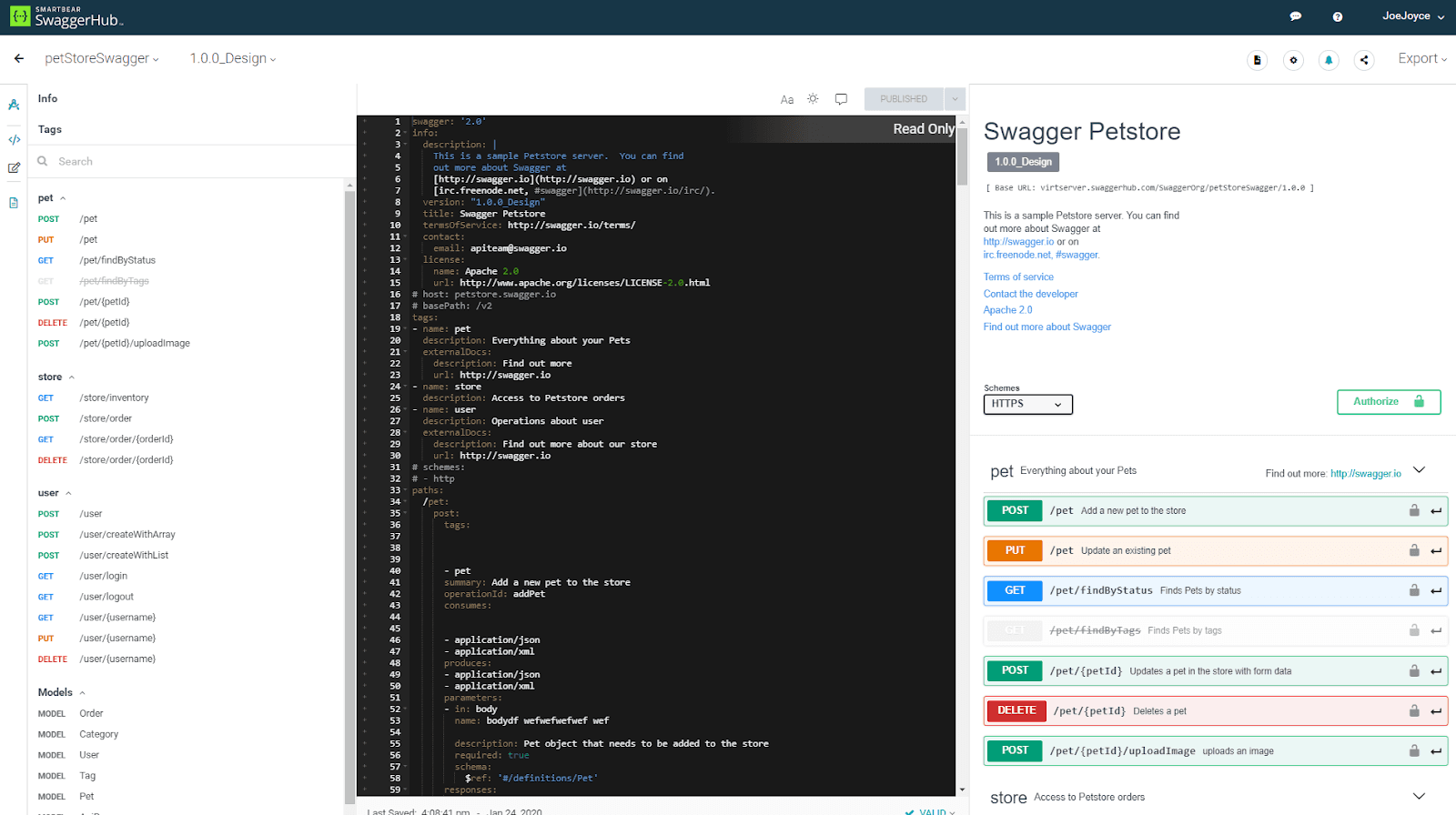
Source: Swagger
It’s worth noting that Swagger comes with some limitations.
For instance, the G2 reviewers who have used Swagger note that there’s room for improvement regarding integrations, version control, and CPU usage.
However, if you encounter problems while using the tool, Swagger’s extensive documentation base can help you resolve common issues.
Swagger Editor, Swagger Codegen, and Swagger UI are open-source tools you can use for free.
However, if you want more robust features and hands-on support, you’ll have to pay for SwaggerHub, the premium package that starts at €80 per month.
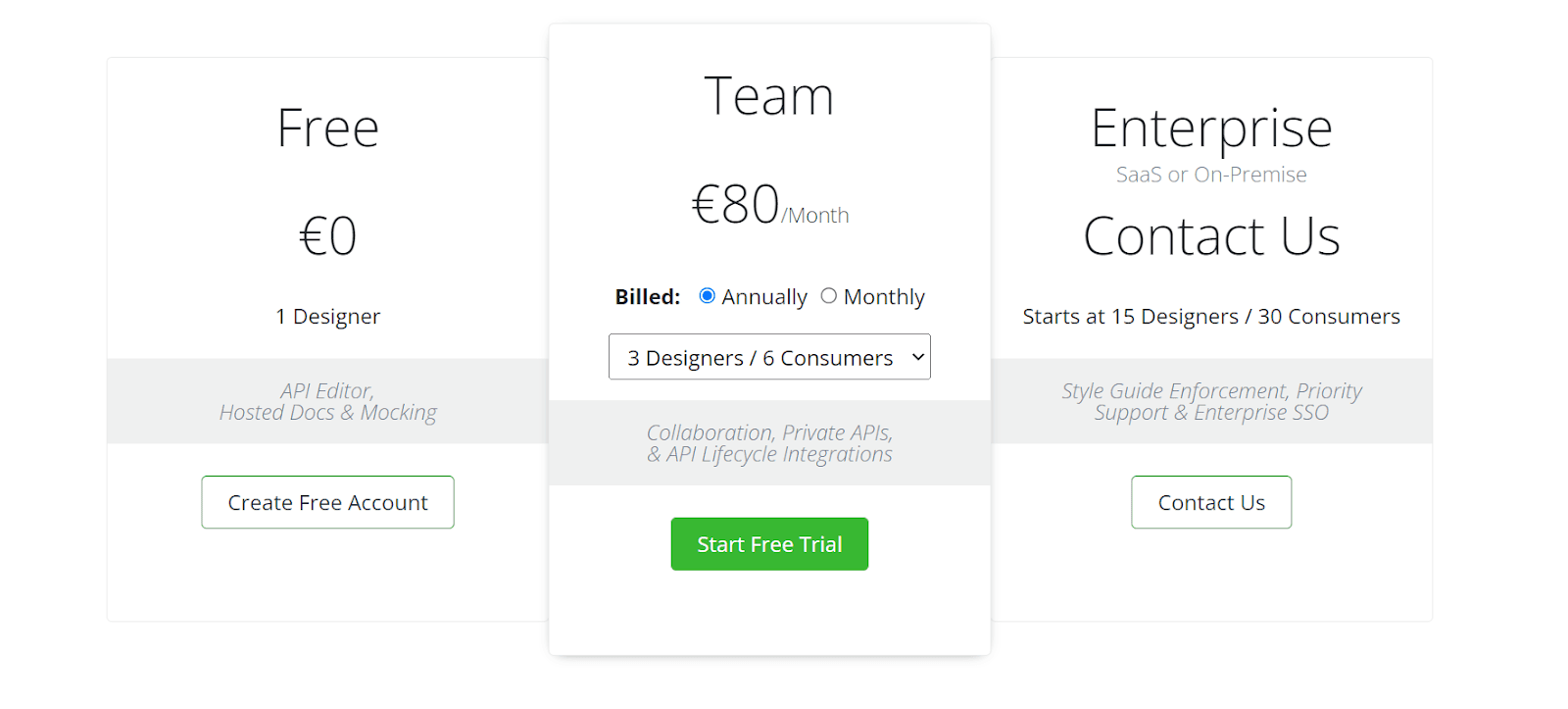
Source: Swagger
So, if you’d like to create comprehensive API documentation but don’t have too much time for writing it yourself, an automatic tool such as Swagger could save the day.
The 14-day free trial can help you determine whether you can achieve your API docs goals with the free version or if the premium one would be a better choice.
ReadMe
A mere reference guide may not suffice for presenting your API in the best possible way.
Instead, it’s better to use developer platforms like those powered by ReadMe to describe your API, provide support, and connect with the users.
ReadMe is a tool that helps companies create interactive API documentation. We’ll look at the company’s own developer hub to see how.
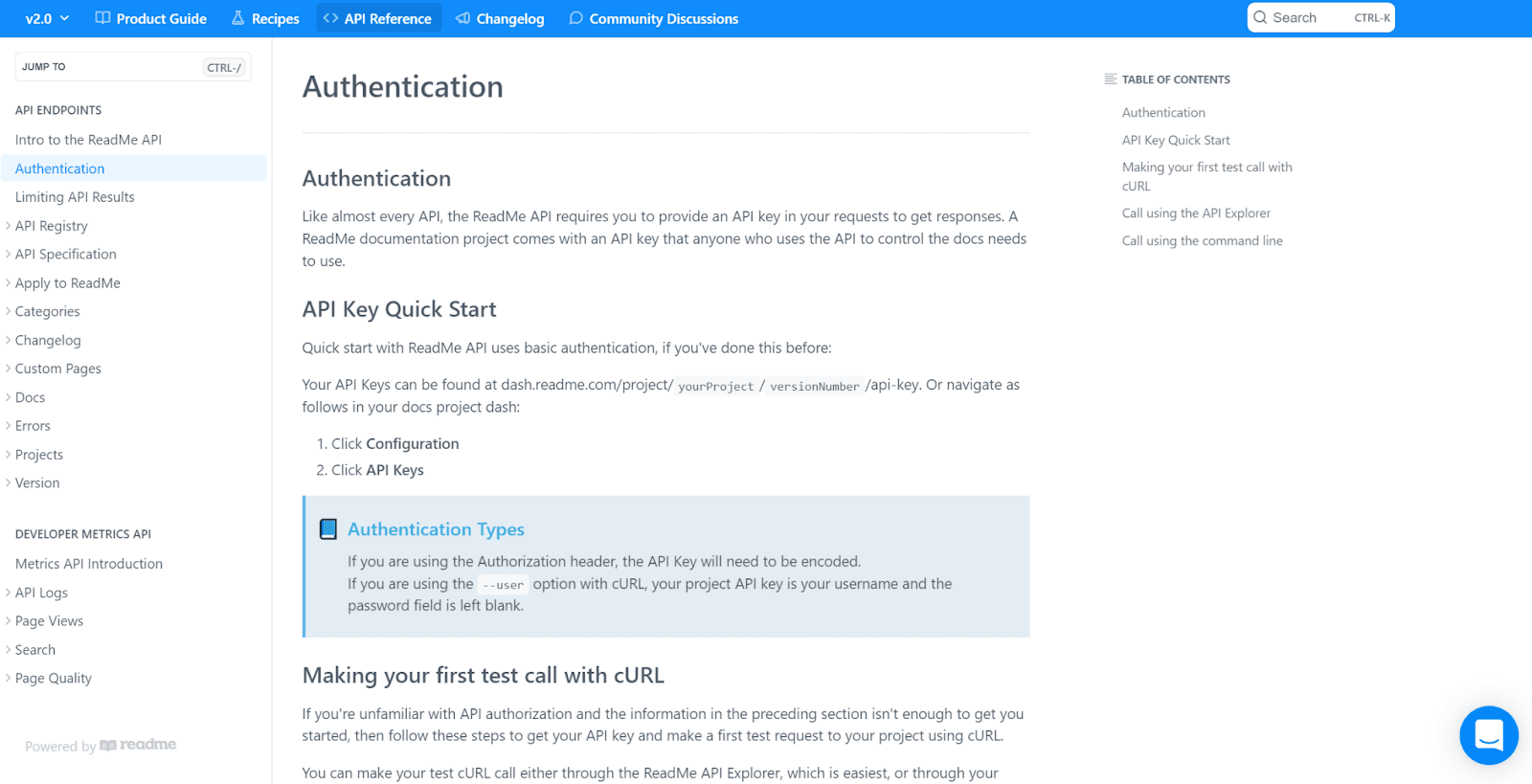
Source: ReadMe
As you can see, the API reference isn’t the only thing introducing the readers to the product.
There are code examples and recipes that readers can tinker with and a changelog with weekly updates about the product.
However, it’s the Community Discussions feature that separates ReadMe from other tech documentation alternatives.

Source: ReadMe
ReadMe allows you to create a developer forum within your documentation, so that you can easily answer your users’ questions and demonstrate to prospective clients that you take support seriously.
Additionally, developers can use the hub to interact with other posters, strengthening the community around your product.
When it comes to shortcomings of the tool, Capterra users list design issues as the biggest disadvantage.
The price factor may also make the product inaccessible to smaller software companies or startups.
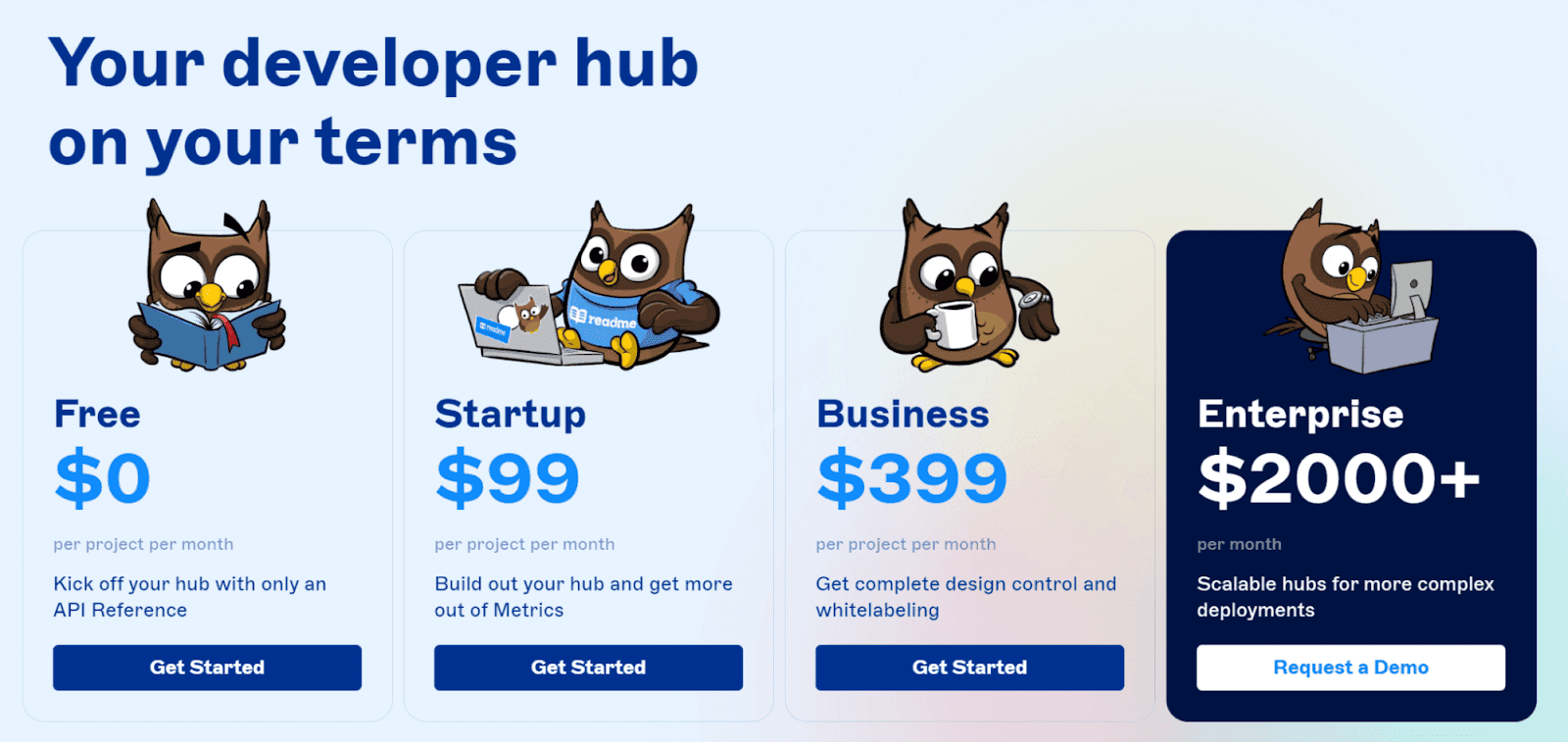
Source: ReadMe
Luckily, a free trial can help you determine whether the price starting at $99 a month justifies the cost of interactive API documentation.
Archbee
If you’re looking for a single platform where you can easily document your API and share the knowledge with the users, look no further than Archbee.
Archbee, our product documentation platform, lets you neatly structure all the information you want to share about your API.
Descriptions, parameters, code blocks, diagrams, and more—over thirty custom blocks allow you to create a complete overview of your API.
We know that writing API documentation is not a one-person project, so Archbee’s collaborative features facilitate the teamwork between developers, technical writers, API writers, and support specialists.
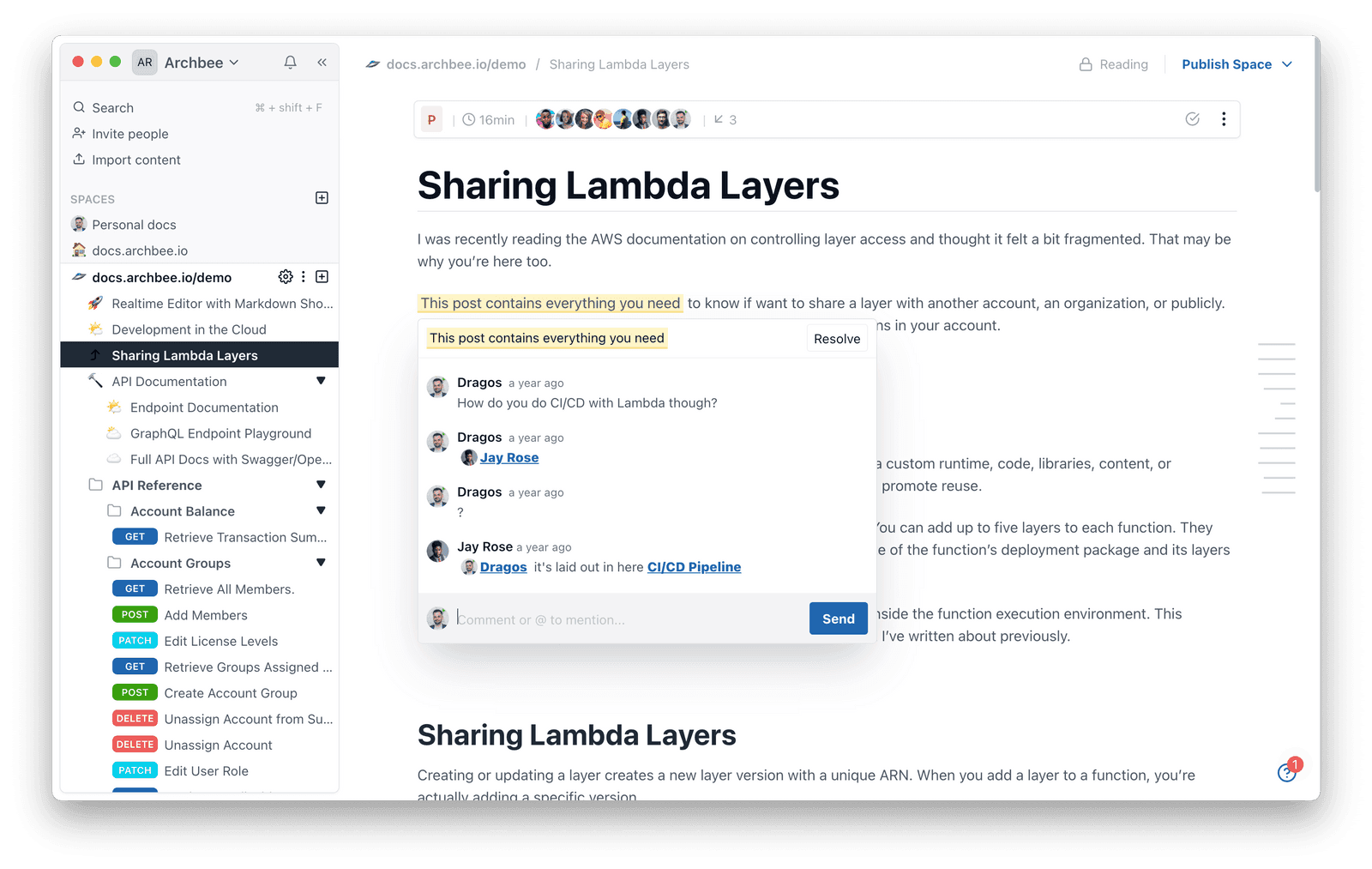
Source: Archbee.com
Since API documentation is usually intended for customers and end-users, you need a documentation tool that allows them to find relevant information and continue using the product with ease.
Archbee’s powerful search engine does just that. The search algorithm provides users with the info they need in a matter of seconds.
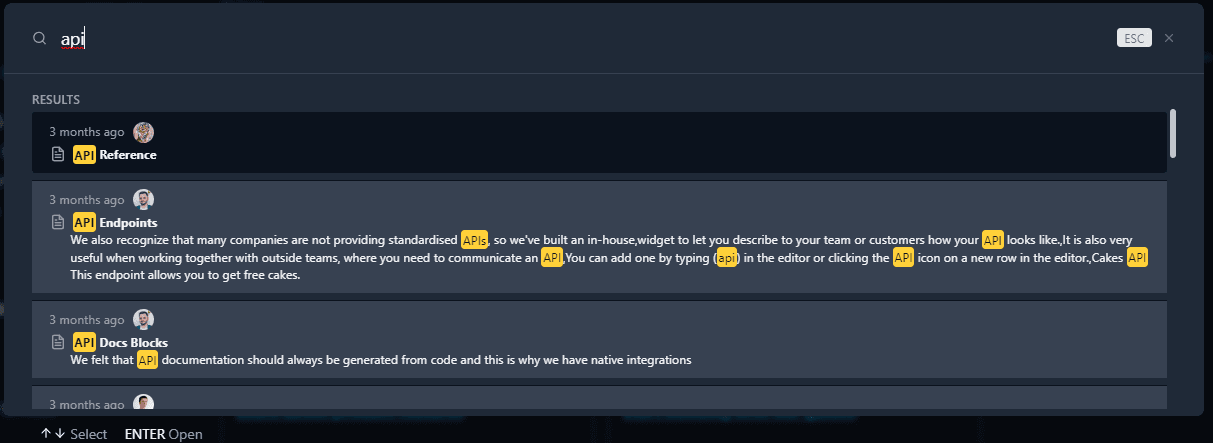
Source: Archbee Search Bar
When you combine this feature with a clear document outline, you create an informative, navigable knowledge base for your API.
That way, you can reduce the number of support tickets you receive, which is a win-win situation for both users and the company.
Pricing is an additional element that makes Archbee an API documentation tool worth considering.
The plans start at $50 per month and go up as the number of team accounts and features included increases. We also have a 50% discount for start-ups for 2 years, available for early-stage startups only.
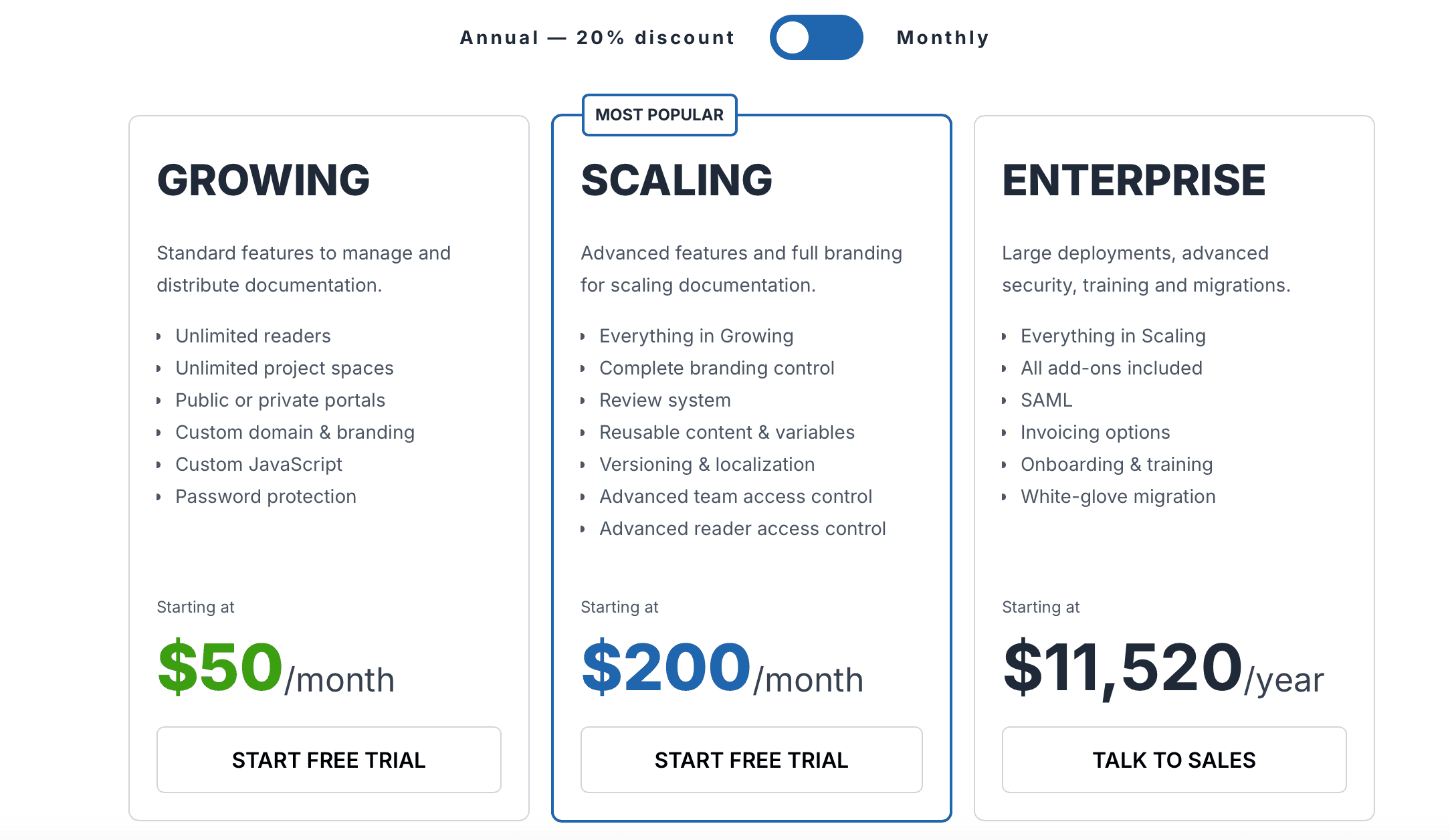
In case you aren’t sure which plan would suit your needs the most, we invite you to start a free trial before you decide.
You can also check out how our clients use Archbee to document their APIs and products in general.
And if you want to see how we’ve upgraded the platform over time, don’t forget to visit our changelog.
Slate
Unlike the tools we’ve previously mentioned, Slate is not a regular documentation platform.
As the product description states, “Slate is just Markdown”, making it a good solution for those accustomed to coding their way through life.
With Slate, you can generate an API documentation site and publish it directly to GitHub.
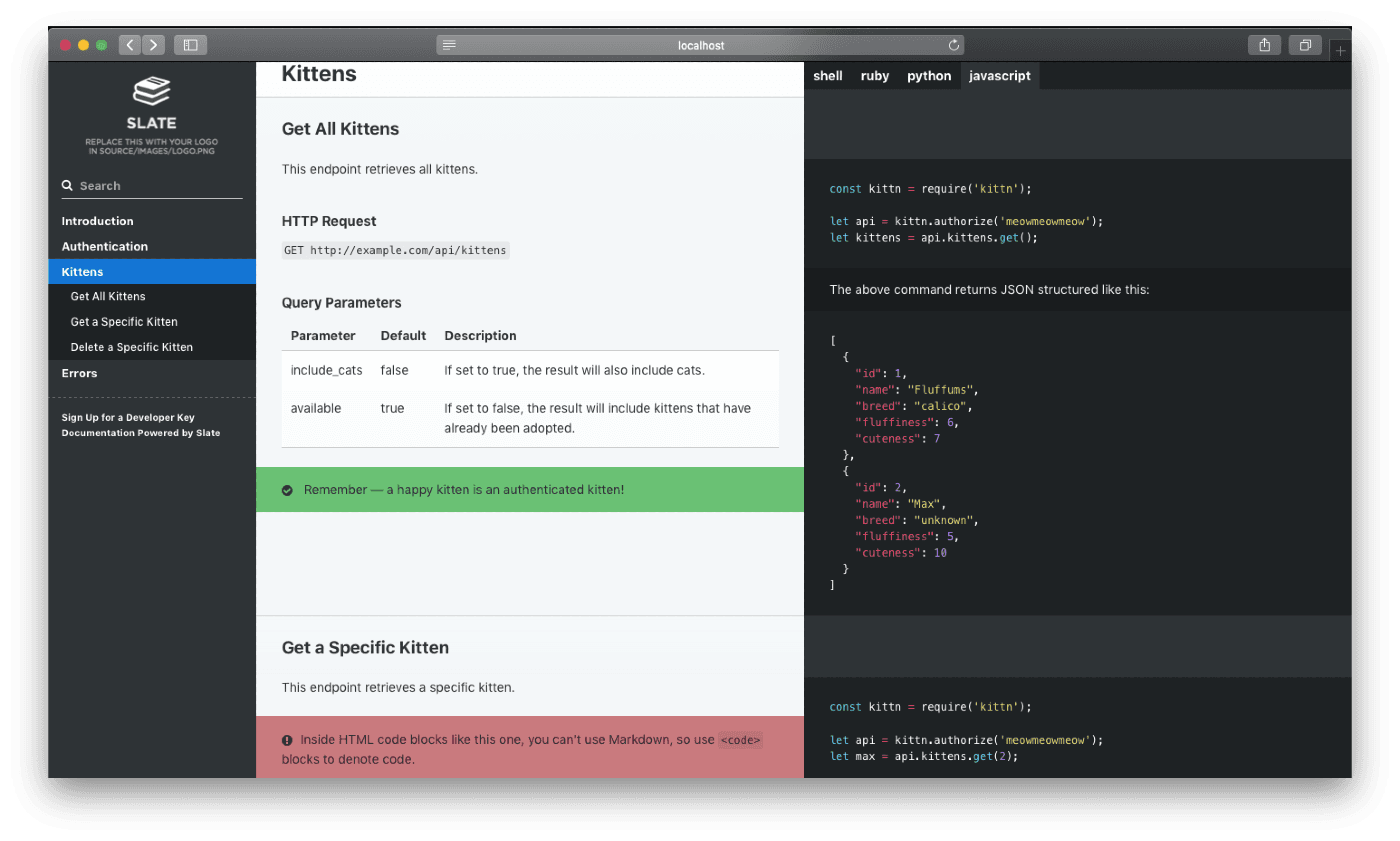
Source: GitHub
While this option may not be a good fit for large tech companies looking to host the API documentation under their domain, Slate is a good solution for documenting the APIs in smaller or open-source projects.
You can also publish the documents elsewhere, but then you’d have to arrange hosting on your own, defeating the purpose of such a straightforward tool.
Docs generated by Slate feature a classic three-panel outline with the table of contents on the left, API description in the middle, and code samples on the right.
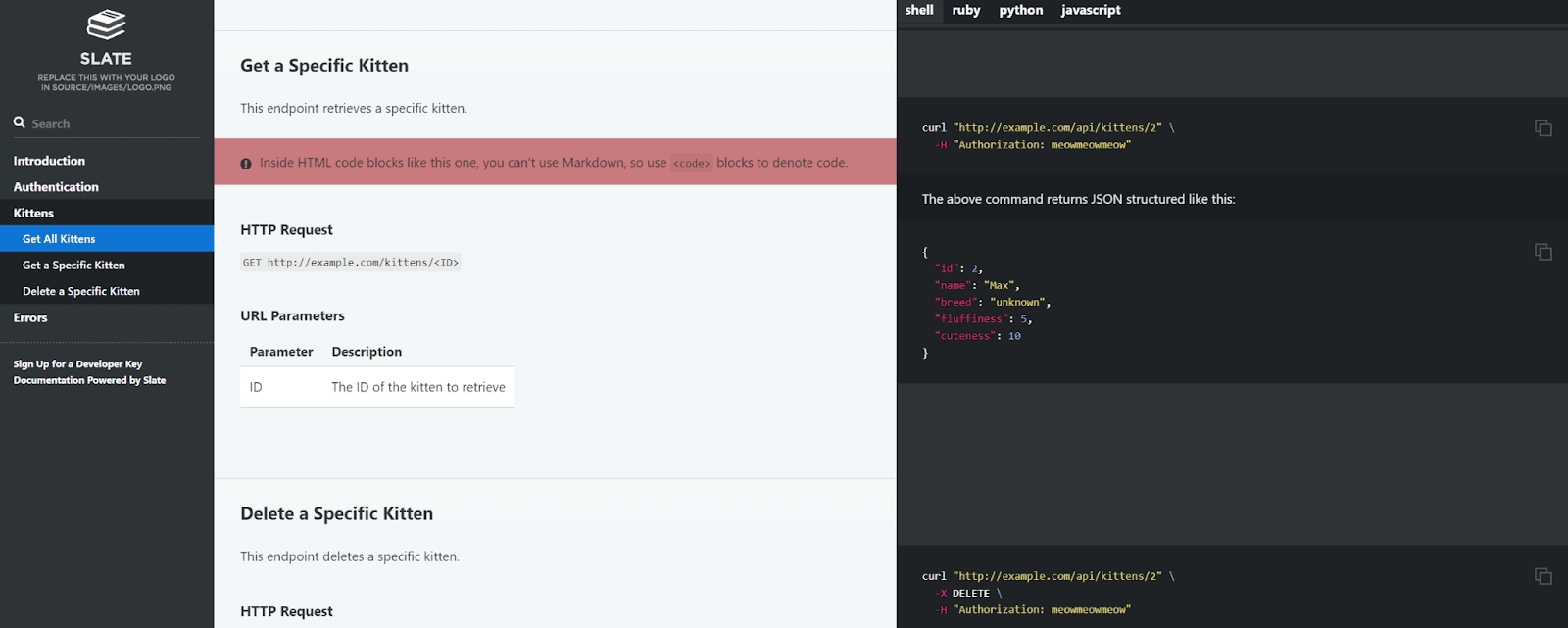
Source: Slate
So, if you’re a one-person band, you can create clean, responsive API documents using Slate.
However, if you’d like to delegate parts of document creation to technical writers or members of non-technical staff, you’re probably better off using a more intuitive and collaboration-friendly API documentation tool.
Slate is an open-source project, and you can use the tool for free.
Postman
Postman is a popular API documentation tool that you can use to manually create API documents or generate machine-readable instructions and examples.
Even if you’ve just dipped into the world of API documentation, you’ve probably already encountered Postman because the company owns the world’s largest public API hub.
The reason why so many companies choose Postman to create their API documentation lies in the fact that you can use one tool to manage the docs throughout the entire development cycle.
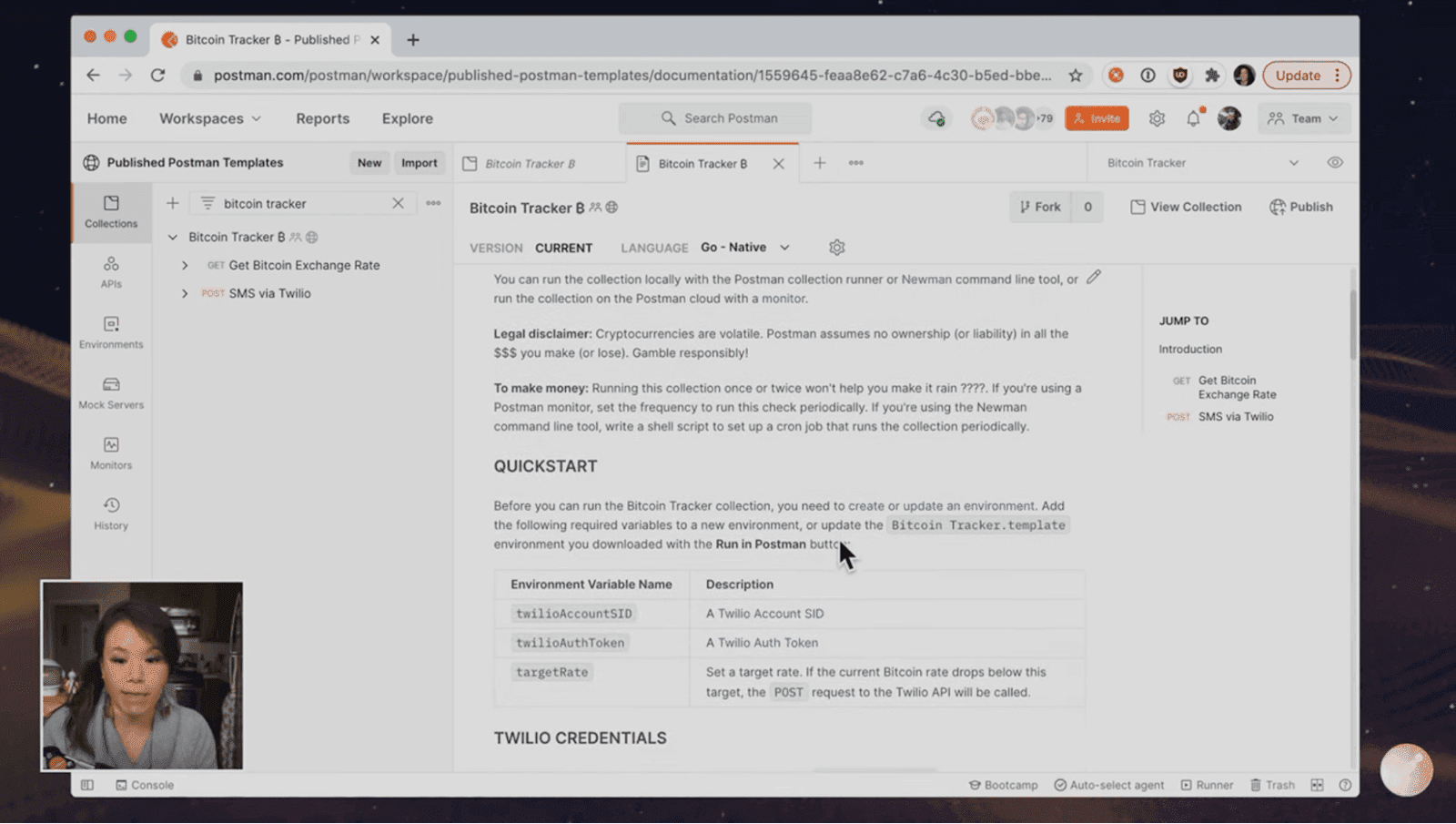
Source: Postman on YouTube
It allows you to create, manage, and store API specifications, test cases, code samples, and all other API artifacts on one platform.
However, using such a complex tool comes with its own set of challenges. That’s why you can see some users on Capterra and TrustRadius complaining about the complicated user interface.
The imprecise search engine is also a commonly cited pain point, so make sure you consider it before purchasing, especially if you need to build docs for a larger API landscape.
Postman offers the users flexibility when it comes to pricing. There are four payment plans, including the free one with limited capabilities.
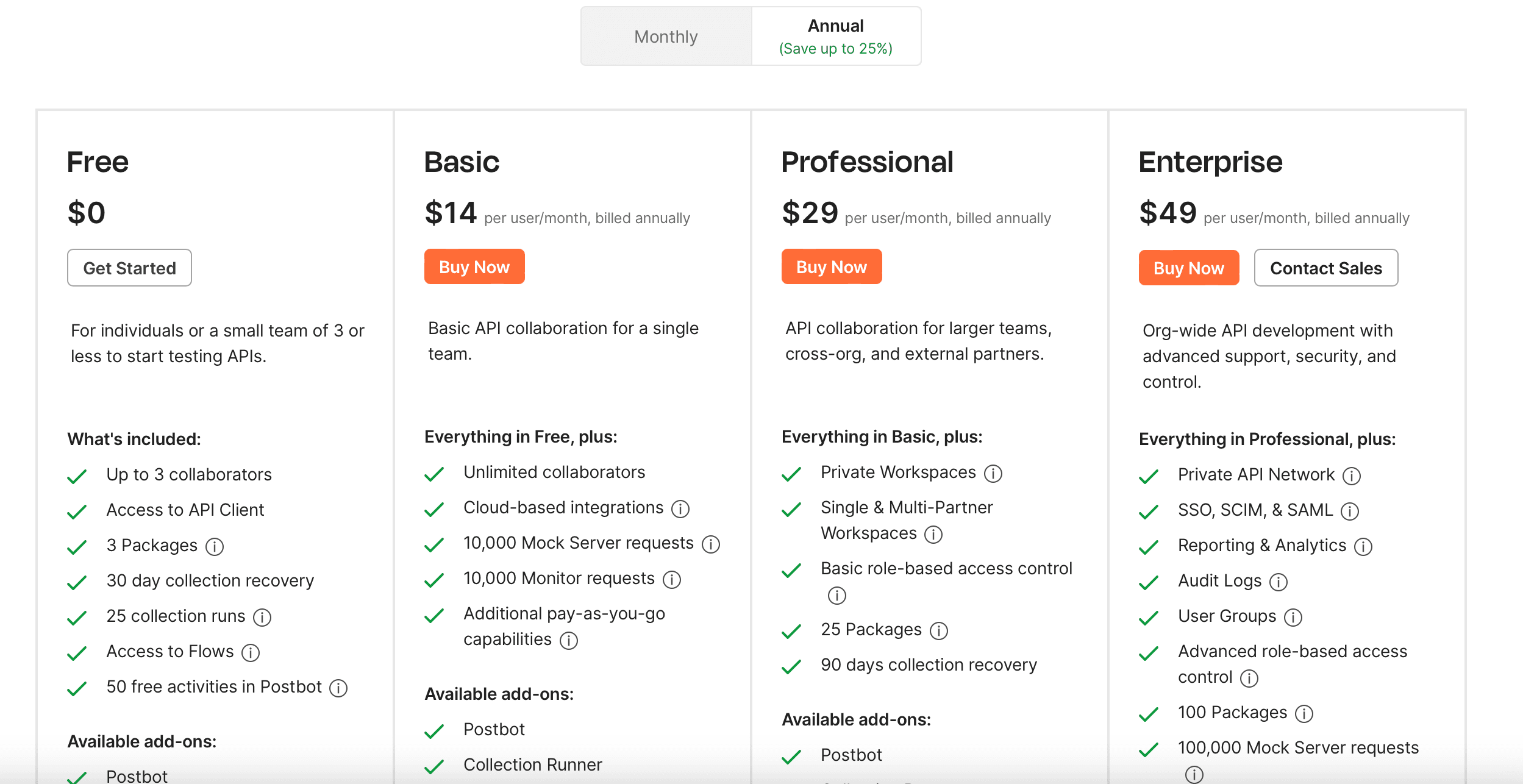
Source: Postman
All things considered, Postman is a good documentation tool for those who don’t mind a bit of a learning curve.
DapperDox
DapperDox is an open-source API documentation generator. You can use it to create API reference documents from Swagger and RAML files.
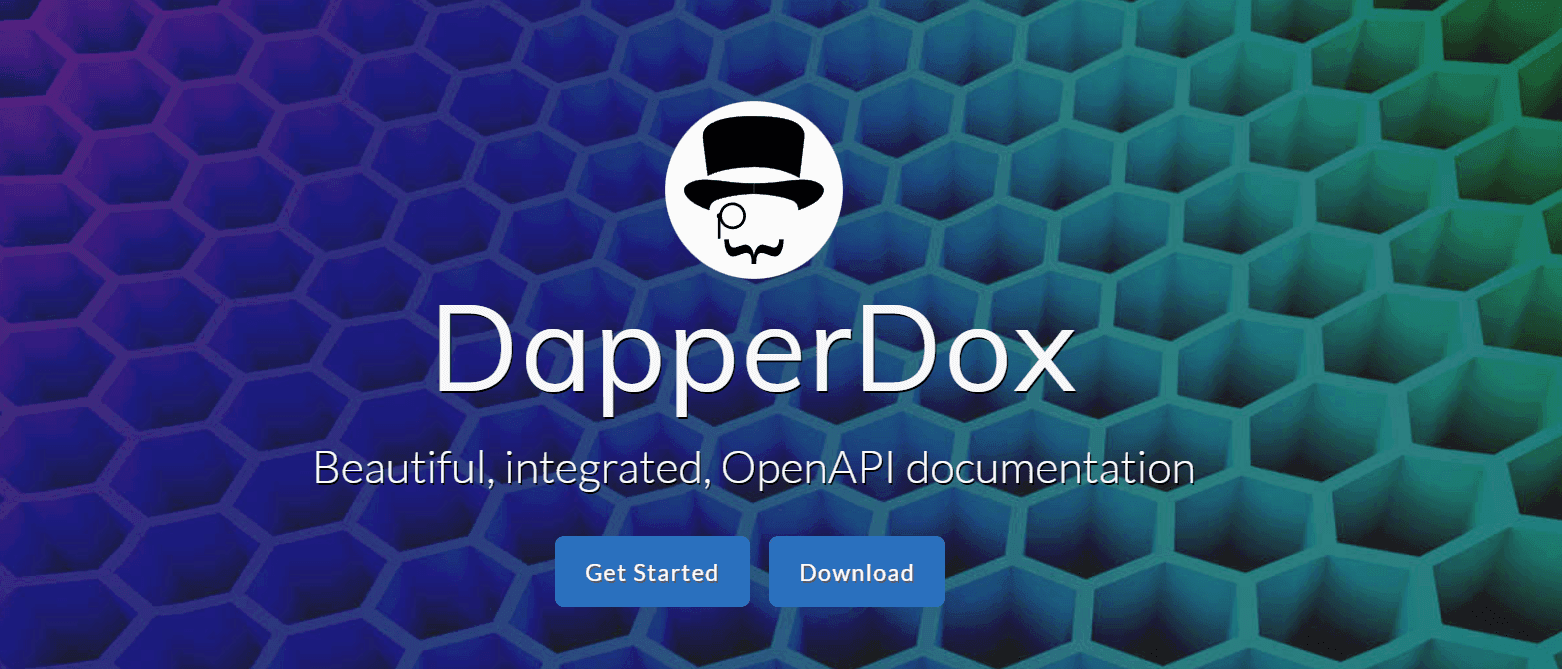
Source: DapperDox
DapperDox allows users to supplement the documentation with diagrams and guides, creating rich reference sites for APIs.
Different formatting options allow you to personalize your docs. You can also coordinate the API documents with your brand by adjusting the themes and styles that DapperDox offers.
The documents published on DapperDox have a straightforward structure, as you can see in the screenshot of the tool’s own documentation below.
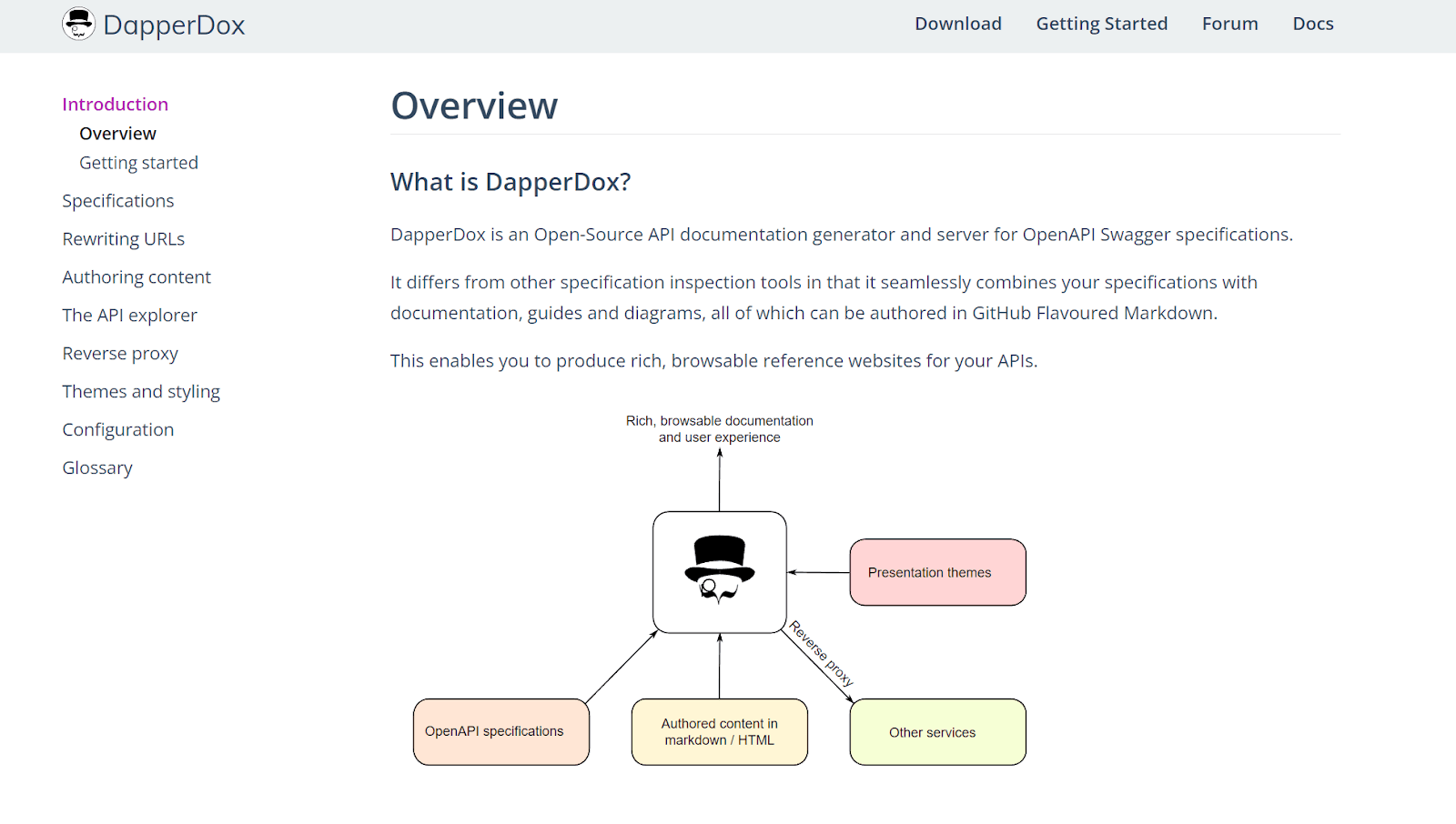
Source: DapperDox
Using Markdown is the only way to author documents in DapperDox, so keep that in mind when selecting your API documentation tool.
If you want the members of non-technical staff to participate in document creation, it’s probably better to go with a tool that supports editing by clicking buttons.
Similarly, if you often rely on third-party tools to generate parts of documents, you should be aware of the tool’s limited integrations.
Still, DapperDox is completely free, so it could be a good option for documenting APIs in less complicated projects.
Theneo
If you aim to create informative and also visually appealing API documentation, Theneo is a great platform to explore.
According to the product description, Theneo can help you generate API documents as beautiful as those from Stripe or Square.
The documents generated in the platform do indeed look professional, with the table of contents displayed on the left and code samples and responses on the right side of the page.
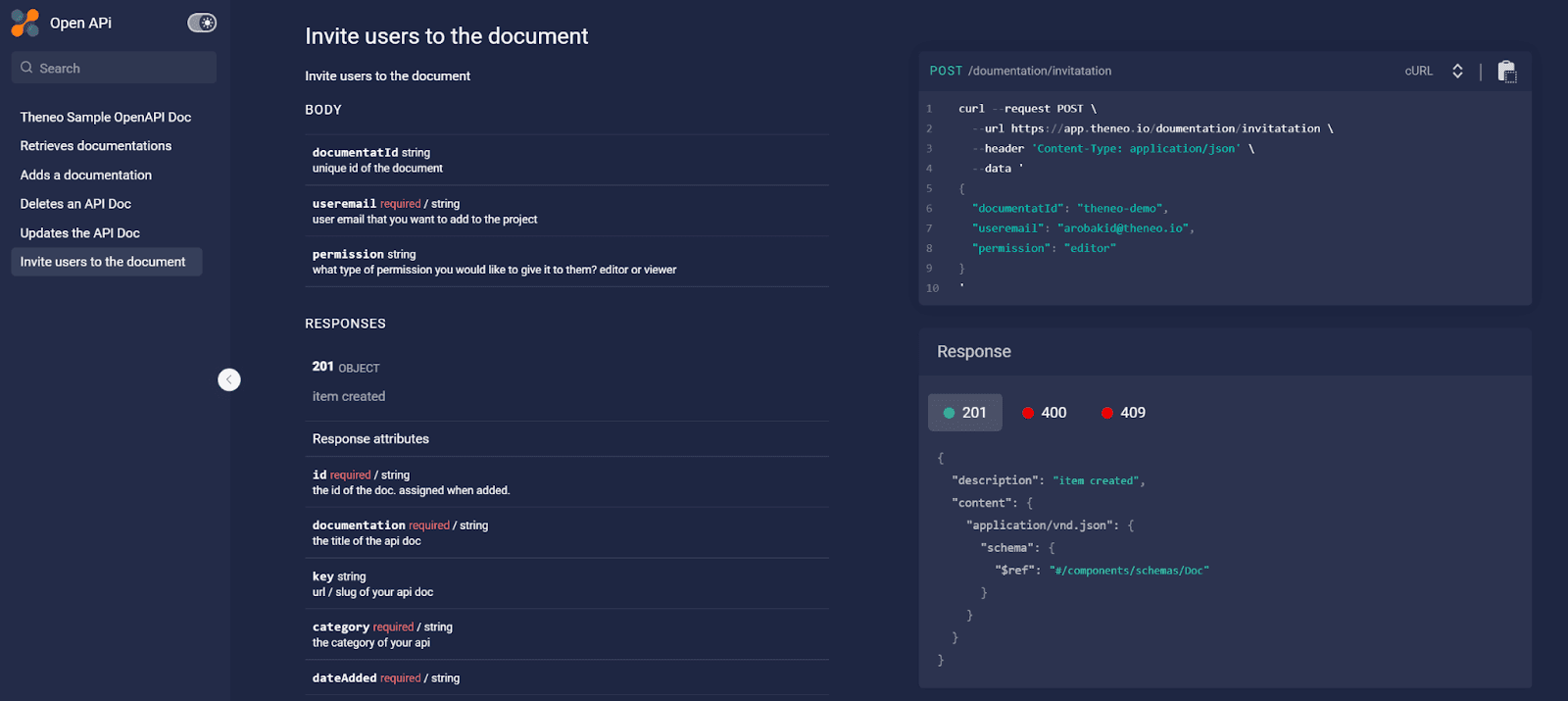
Source: Theneo
This AI-powered API documentation tool is also great for companies looking to save time spent on document creation.
Theneo’s machine learning models help you cut down on tedious manual work in creating and publishing documents, letting you focus on the aspects of API where your expertise is irreplaceable.
You should keep in mind that Theneo is a relatively new platform, launched in 2022. Therefore, you can expect some features to still be a work in progress.
For instance, the founders reported a few months post-launch that there was a bug with GraphQL importing and that they were working on resolving it.
And due to the platform being so new, the support documents may not cover that many edge cases yet.
Theneo offers three pricing plans.
The tool may seem more cost-effective than the alternatives, but it’s worth pointing out that the prices for the Basic and the Business plan of $20 and $45 respectively are listed for one editor only.
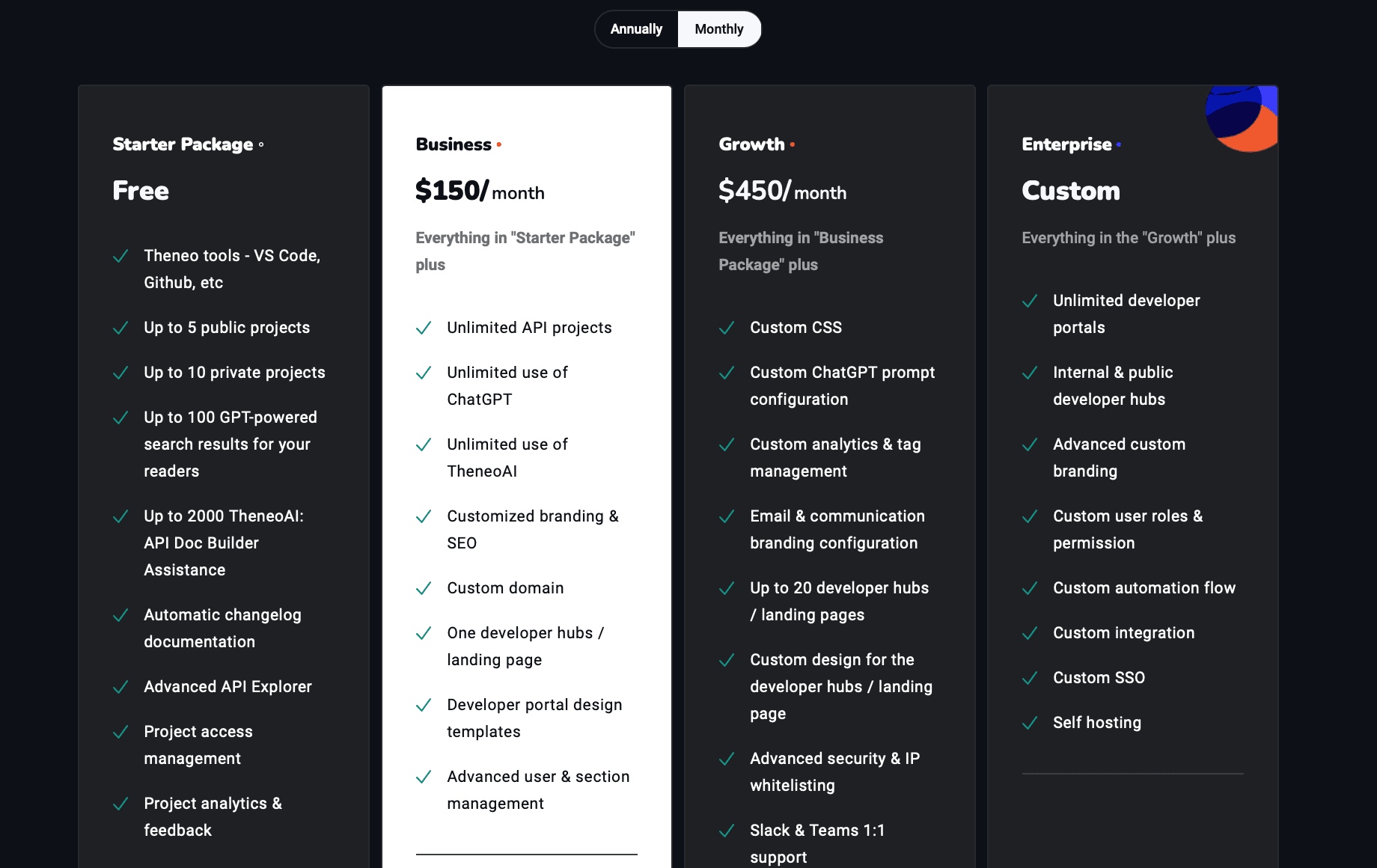
Source: Theneo
So, if you’re planning to take a collaborative approach to API document creation, you should consider the combined cost of multiple payments.
Redocly
Redocly is a heavy-duty API documentation tool that supports the needs of larger enterprises.
In addition to creating basic API specifications, Redocly also allows users to create branded portals with interactive API documentation.
API reference documents generated with Redocly mostly follow a standard outline and have a clean, basic design. You can see the company’s own example below.
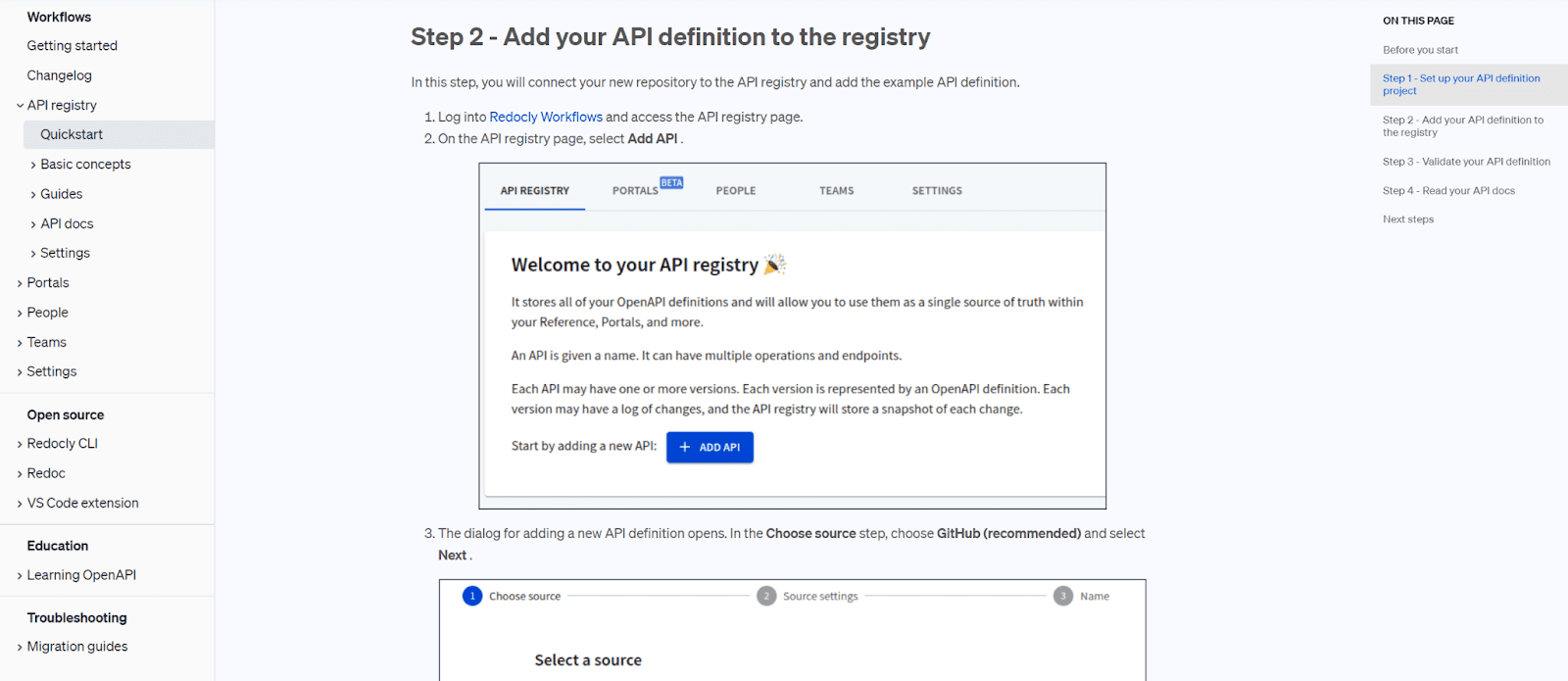
Source: Redocly
However, customization is Redocly’s main selling point, so enterprise users frequently incorporate Redocly-generated documents with custom themes, fonts, and the navigation bar into their portals.
In addition to customization, Redocly also features API versioning, markdown editing, and auto-generated code samples.
These are all standard features that you can find in most of the tools we’ve mentioned so far.
Still, Redocly offers more support and fewer limitations, making it a good option for large enterprises and teams.
With that said, we should note that Redocly comes with prices that are a bit higher than the average.
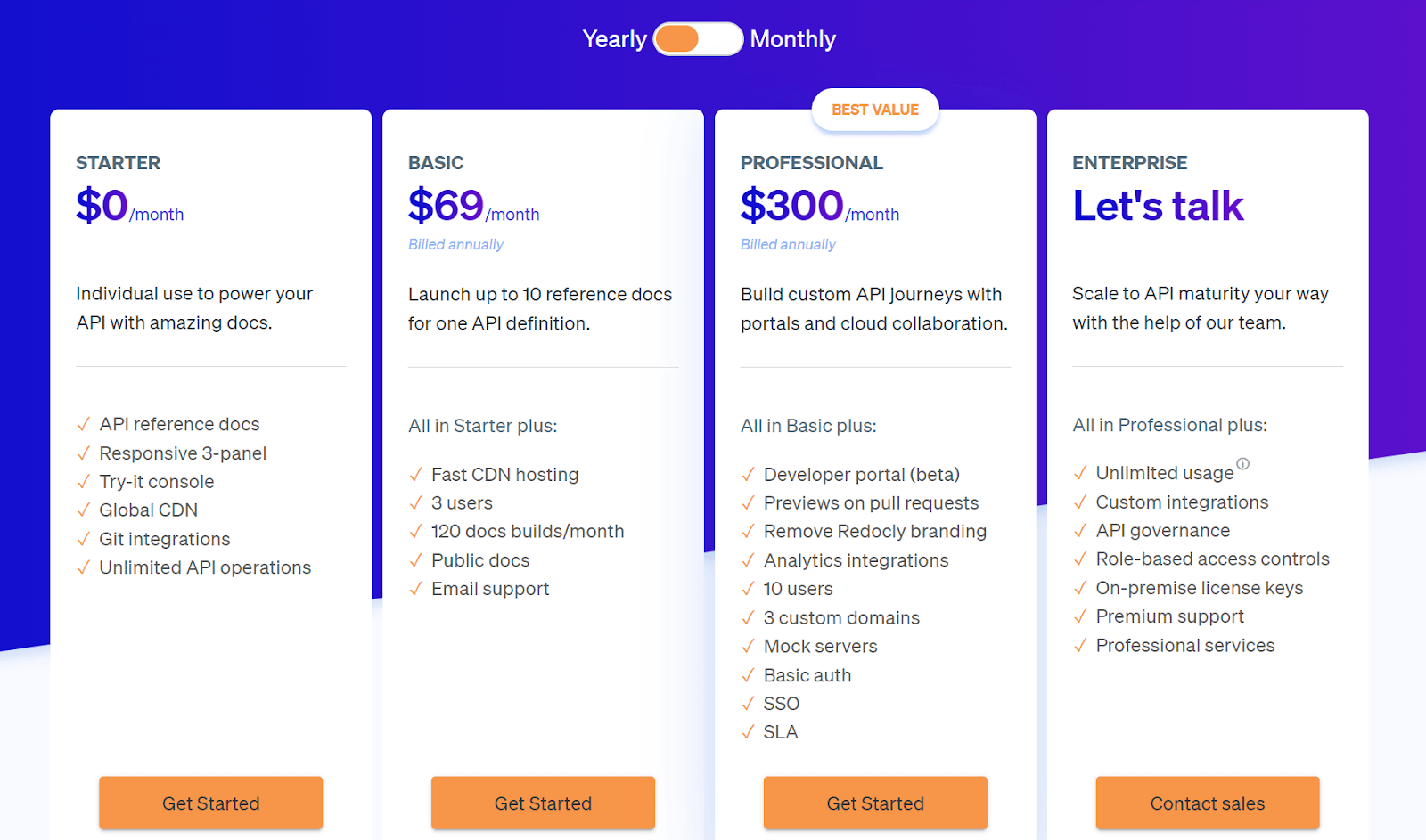
Source: Redocly
The Starter plan is free, but it comes with limited features. You may have seen this option under the name Redoc, an open-source API tool.
Upgrading from Redoc to Redocly unlocks a slew of features, but the price starts at $69, which is pricier compared to basic plans of alternative tools.
If you’re running an enterprise operation, you’ll have to reach out to the sales team to get an accurate quote.
Stoplight
Stoplight, an API design and management solution, is another tool that lets you automatically generate documents from OpenAPI files.
In addition to listing references, you can use the tool to supplement your API documents with guides, tutorials, and code samples.
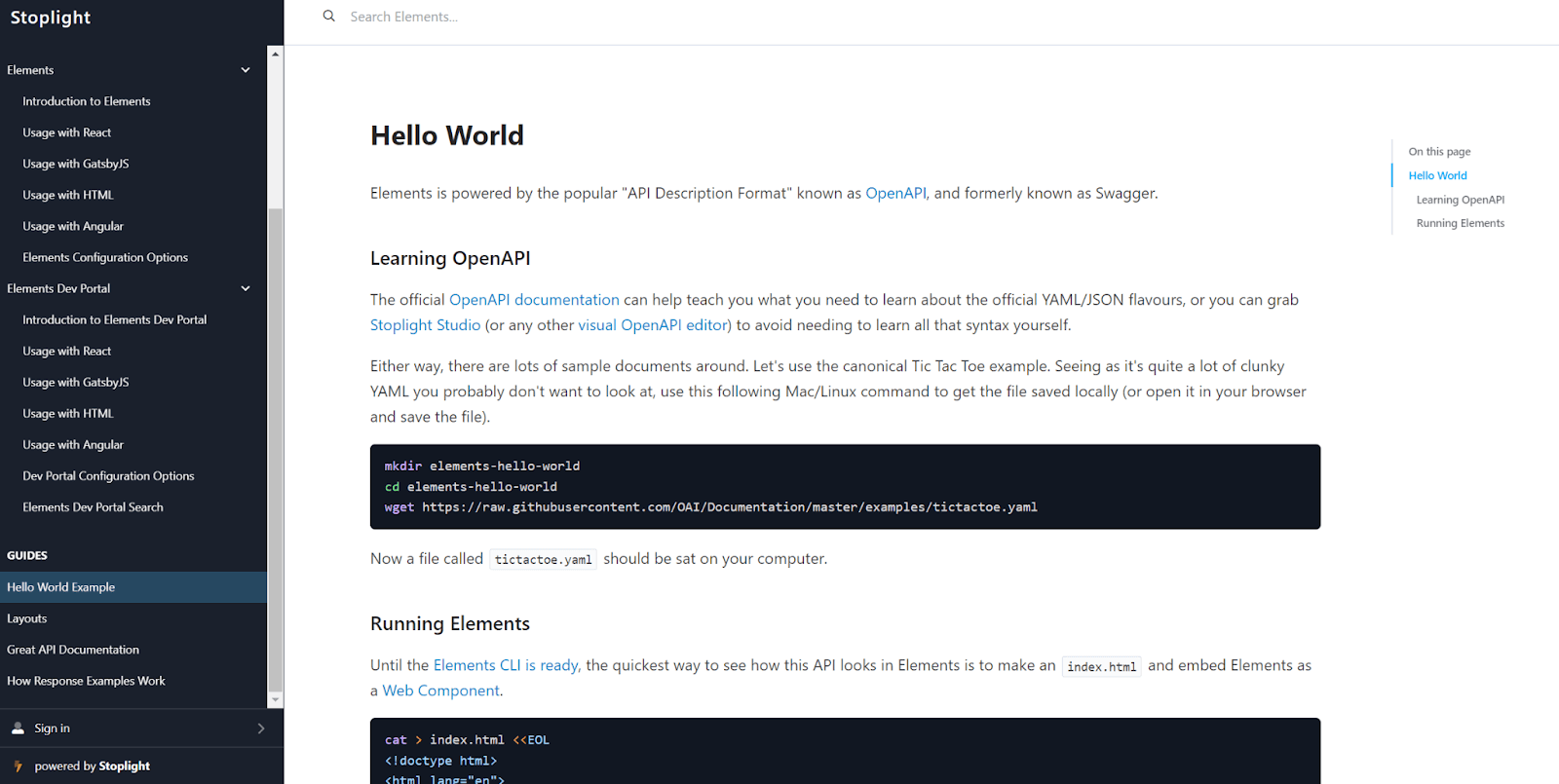
Source: Stoplight
Just like Archbee, Stoplight also provides clients with the option to host API documentation internally, in addition to sharing it with end-users.
While you don’t have to use Markdown to create API documentation in Stoplight, there are some limitations that reduce the tools usability.
For instance, some of the g2 reviewers have complained about the lack of integration with the tools they usually use for writing API documentation.
Some complaints are also directed at the complex and confusing UI that takes time to master.
Still, once you get acquainted with the tool, you can create simple yet effective API documents.
Stoplight offers four different plans, one of which is free. Note that the free plan only allows you to work on two projects.
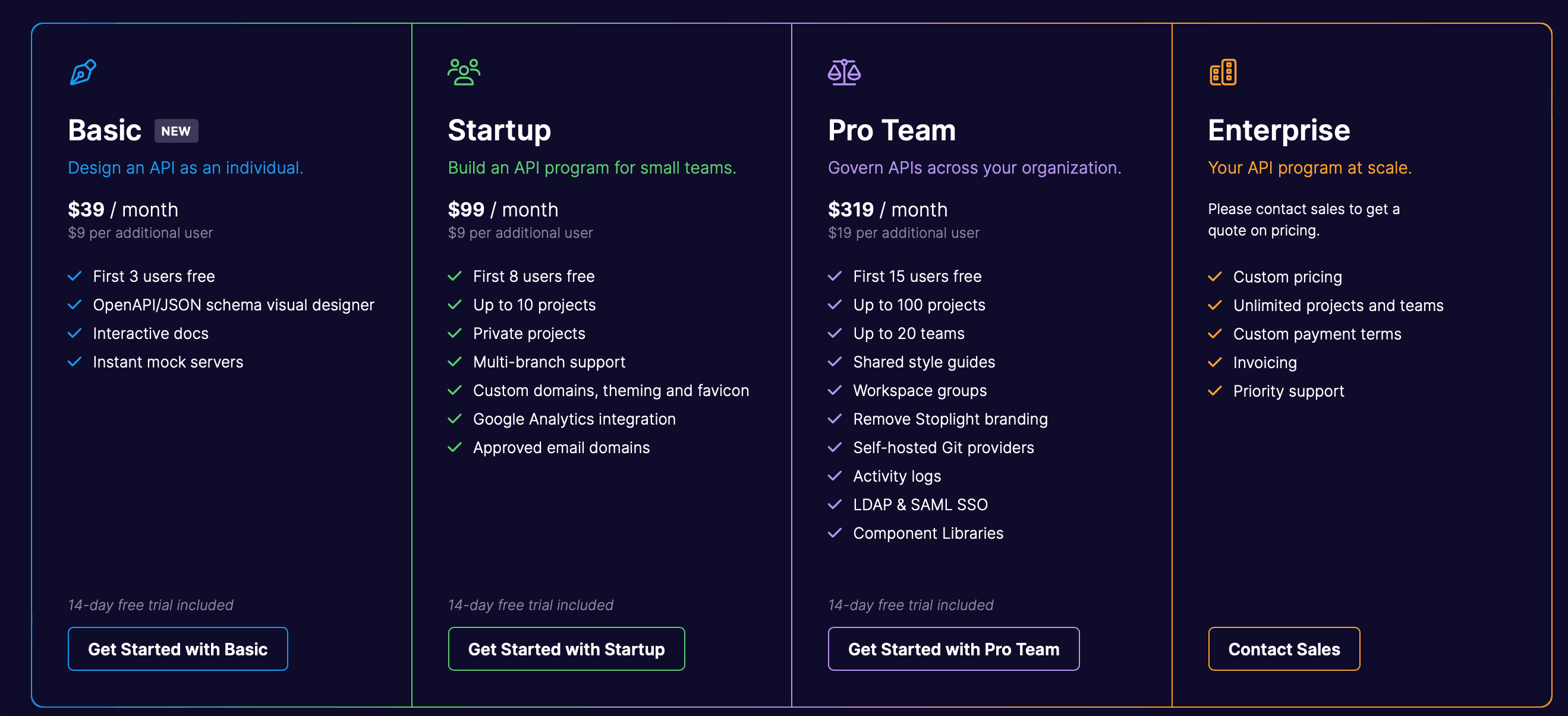
Source: Stoplight
So, if you want to create more complex API documents with more than three team members, you’ll have to invest in one of the paid plans, starting at $79 per month.
Conclusion
Any of the top tools for documenting your APIs above will help you design clean and user-friendly API documentation.
However, there are some differences in features that could make some tools more suitable for your project than others.
So, whether you are looking for manual or automated document creation, make sure you determine which features your tool of choice absolutely has to have and which are nice-to-have additions.
Try Archbee's full range of features with our free 14-day trial.
FAQ
Frequently Asked Questions
Swagger streamlines API docs by generating interactive, human‑ and machine‑readable documentation directly from your OpenAPI/Swagger spec—so your source of truth stays in one place.
Key pieces you can use:
- Swagger Editor: Design and validate your OpenAPI spec.
- Swagger UI: Render an interactive reference straight from the spec.
- Swagger Codegen: Generate client SDKs and server stubs from your definitions.
- SwaggerHub (paid): Add team features like collaboration, hosting, and governance to keep specs and docs in sync and support automated testing workflows.
Pricing highlights:
- Editor, UI, and Codegen are open source (free).
- SwaggerHub starts around €80/month, with a 14‑day free trial to test team features.
Best for: teams working OpenAPI‑first who want automated, always‑in‑sync docs and a path to collaboration at scale.
